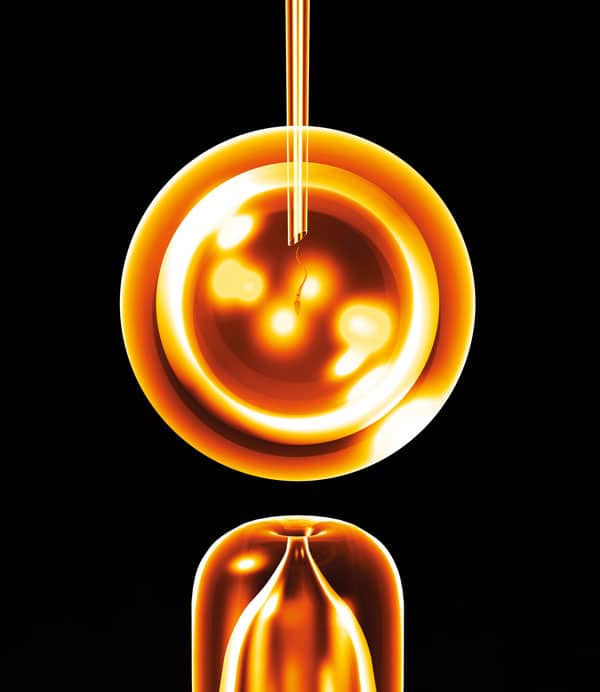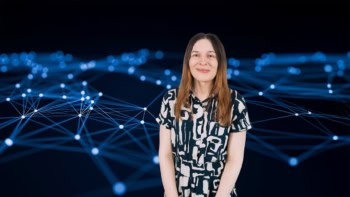The story of Research Instruments and its founder, Mike Lee, is a fascinating lesson in adaptability. It is also supporting a brand-new physics innovation prize, as James McKenzie explains

Like many successful companies, Research Instruments (RI) got its start when its founders grew bored with their day jobs. It was the early 1960s, and Mike Lee and Vince Grispo began building prototypes in Mike’s attic. Their first instruments were micro-manipulators, which mechanically reduced and stabilized the movement of the hand so the person could carry out fine work under a microscope. In 1962 RI moved out of the attic and into a shed at the bottom of Mike’s garden, which they filled with a milling machine, a pillar drill, and some very good sound insulation to avoid annoying the neighbours or Mike’s wife, Ann Lee (née Lucas), who was working on RI’s sales and marketing.
In RI’s early years, the principal use for micro-manipulators lay in testing semiconductor integrated circuits. To measure a circuit’s response, testers had to make non-destructive connections to the fine wires linking individual components within the circuit. In 1970 these interconnection lines were about 30 microns across, half the diameter of a human hair. However, as the number of components per unit area increased, the lines grew narrower still. It soon became clear to Mike that RI needed either to find new applications for its micro-manipulators, or else diversify into other areas.
Mike had always worked closely with customers in research, and one of these collaborations led him to develop a new instrument. RI’s “ultrastage” could measure the alignment of an optical fibre to a fraction of a micron, and it was built on the specifications of a certain Charles Kao, who was then developing fibres for optical communications. Kao, of course, went on to receive a Nobel prize and a knighthood for his work, and he is now considered the “father of optical cables”. Solving a problem for this esteemed customer enabled RI to enter the growing market for R&D equipment for optics and photonics research.
Solving a problem for this esteemed customer enabled RI to enter the growing market for R&D equipment for optics and photonics research
By the late 1960s, RI had outgrown both Mike’s shed and a small industrial unit in London. A regional development grant helped the firm relocate to Penryn in Cornwall, where Mike, Vince, Ann and the employees settled into a custom-built space that cost the same as their old London premises, but was five times the size. During this period, the company continued to innovate and move with the times. One product, the “groovac”, was designed to suck away dirt from the grooves in vinyl records, improving their sound quality. It sold in large volumes until 1983, when declining record sales led RI to cease production.
Another variant of the micromanipulator product with integral micropipettes had a more long-lasting impact. One of its main applications was in fertility clinics, which sprang up after Robert Edwards, Patrick Steptoe and Jean Purdy developed in vitro fertilization (IVF) in 1977. Their technique involved mixing sperm and eggs together in a test-tube or culture dish, allowing the resulting fertilized eggs to grow, and then transferring them into the uterus.
Simon Fishel – a British biochemist and virologist – noticed the company at a trade show in Italy and worked with RI to develop its technology for fertility treatment applications. Fishel was a member of the team that produced the world’s first IVF baby, Louise Brown, who was born in 1978, and Edwards went on to receive the Nobel Prize for Physiology or Medicine in 2010. By that time, Mike and Ann had retired. RI continues to operate today as a division of a larger medical-equipment company (CooperSurgical Fertility and Genomic Solutions).
At this point, I can hear you saying, “That’s all very inspiring, James, but why are you writing about it?” Well, last year, I and my colleagues at the Institute of Physics (IOP) decided to add a new “start-up” category to the IOP’s Business Innovation Awards, which honour firms that built success on the innovative application of physics. As I explained in this column last year, early-stage companies had found it hard to provide enough evidence of commercial growth to qualify for the main Business Innovation Awards, but their work is nonetheless worthy of recognition. Early-stage awards, like the IOP’s, can raise a firm’s profile, lend credibility to a novel technology and generate constructive feedback from seasoned business leaders on the judging panel.
If there’s anything an early-stage business needs (apart from publicity and credibility), it’s cash
When Mike saw this column, he did something amazing: he wrote to me to say that he would like to add a cash prize to the IOP’s start-up awards. This got my attention right away, because if there’s anything an early-stage business needs (apart from publicity and credibility), it’s cash. After some discussions, I am pleased to say that the new Lee–Lucas Prize for early-stage businesses in (principally) medical physics will be awarded for the first time in 2020. The emphasis on medical physics reflects Mike and Ann’s wishes and the importance of such businesses to society but also that medical-physics businesses often take a while to get established these days – and thus need extra support mostly due to the challenging regulatory requirements associated with medical applications.

Achieving innovation
Endowing this prize is an extremely generous thing to do, and one that I am sure its recipients will appreciate. I also hope that Mike publishes his memoirs, so you can all read in more detail about how he and Ann created RI and grew it into a successful business. Theirs is a fascinating story of innovation, solid leadership and entrepreneurial determination, and I hope it will inspire other physicists to start companies and (of course) enter them in the IOP Business Awards. The closing date for next year’s awards is 3 January 2020. And if any other readers would like to write to me about sponsoring a prize, all I can say is: my inbox is open.



